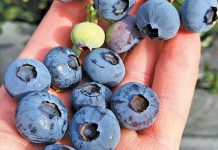“They don’t need grain in its primary form, so we exchanged information on agro-processing and agribusiness. We also discussed market access for processed goods,” she said. Grain SA chairperson Neels Ferreira, who was part of the delegation, said South Africa didn’t have the infrastructure to deliver the 4 million ton grain surplus in under a year.
“Even if China wanted our surplus, the state of our railways and roads is a major drawback,” he said. “But they’re a country of 1,3 billion people whose major concern is food security. The middle class is growing and there’s huge potential for grains to be used in the food chain,” he added.China’s ban on South African wool exports, after the Rift Valley fever (RVF) outbreak, was also discussed, said Joemat-Pettersson.
“We told the Chinese that RVF is a notifiable disease in terms of the World Organisation for Animal Health (OIE), which allows trade in these commodities even if a country isn’t RVF-free. They asked for updated information on RVF, we gave it to them and we’re hoping that trade in skins, hides and wool will soon resume.
“The Chinese are also very interested in our game. I think we’ve underestimated the world market for it. We’ll be starting on a protocol to address some concerns they have about our ability to do adequate surveillance in this sector, and whether we have enough vets to monitor disease.”Joemat-Pettersson returned to China on 7 September to underscore South Africa’s position as the major exporter on the continent at the World Export Development Forum.
“It’s an excellent opportunity to expose the kinds of transactions we have with the world, and those transactions we wish to have,” she said.China’s food market is dominated by Brazilian, Russian and American exports, and South Africa would have to work hard to become competitive, she added. Ferreira also noted that, “China is a very good prospect in terms of sea freight costs – it’s more favourable than exporting to the US”.








